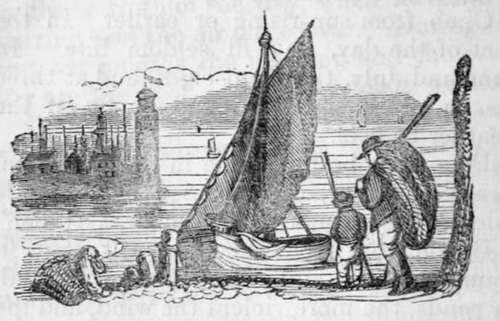The Red Worm As Bait
Description
This section is from the book "The Art Of Angling Greatly Improved", by An Unknown Author. Also available from Amazon: The Art of Angling Greatly Improved.
The Red Worm As Bait
Is found in all loamy soils, and ma^y be gathered by following a plough, turning up garden soil, and under boards, bricks, slates, tiles, stones, etc. that have lain undisturbed a short time. It is a good bait in clear water singly, but when the water is discoloured two are preferable, particularly for Trout. When two worms are used, the hook should be thrust through the knot of that which is to remain uppermost, and when forced through only one-third of its body, must be drawn to the top of the shank until the wire be covered, and it will.then remain secure; observing to reverse the end that you begin at, and the knot being held by the barb, they will remain sufficiently firm.
The Brandling, or Gilt-tail, is a beautiful little worm, dark at the head, becoming gradually paler towards the tail, which is decorated with bright yellow circles, that distinguish it from all other reptiles of this class. They are found in old dung-hills, old hot-beds, especially where tanners' bark has been used, and often in tanners' bark alone, provided it has lain a sufficient time to rot. From the beginning of May to the middle of September, it is the best worm that can be used, and what few fish when on feed will refuse.
To prepare the tackle for worm fishing in streams, a small piece of music-wire should be whipped to the upper end of the shank of the hook, in order to keep the bait in a proper position. No precise directions can be given for leading the line, as it depends so much on its length, the depth of the stream, and the rapidity of the current; the bait should sink quickly, and fish near the bottom; if the line be overleaded, it will be found extremely troublesome, as the hook will frequently be entangled with whatever it meets at the bot-torn ; such as stones, roots of trees, etc.

Continue to:
- prev: Baits
- Table of Contents
- next: Maggot Fishing
